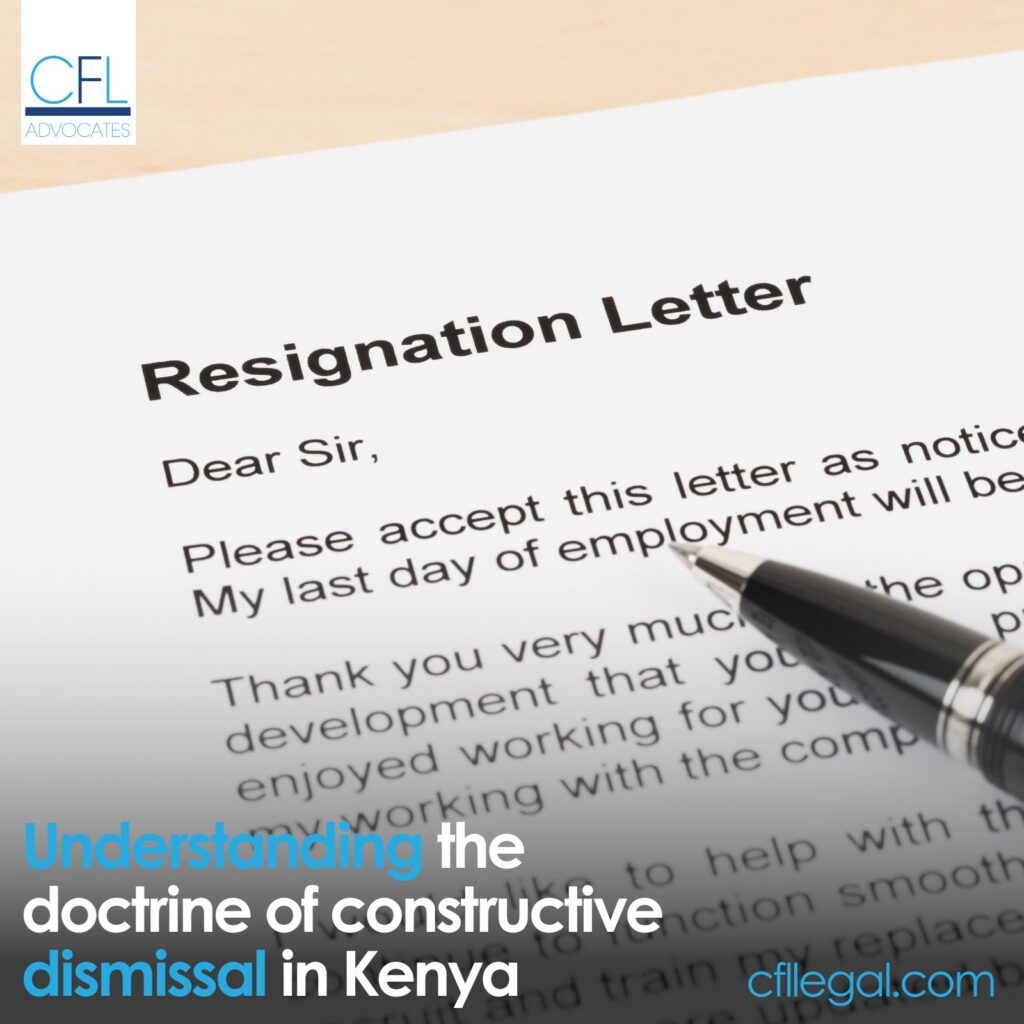
Definition
Constructive dismissal occurs when an employer creates such an unbearable or unreasonable working environment that the employee resigns, not out of choice, but because continuing to work would be near impossible. The doctrine of constructive dismissal is not codified under Kenyan labour laws and thus, recourse is had to judicial precedents.
Analysis
The precedent-setting decision on constructive dismissal is Coca Cola East & Central Africa Limited v Maria Kagai Ligaga [2015] KECA 394 (KLR) where the Court of Appeal set forth the legal principles that are relevant in determining constructive dismissal which include the following:
- What are the fundamental or essential terms of the contract of employment?
- Is there a repudiatory breach of the fundamental terms of the contract through conduct of the employer?
- The conduct of the employer must be a fundamental or significant breach going to the root of the contract of employment or which shows that the employer no longer intends to be bound by one or more of the essential terms of the contract.
- An objective test is to be applied in evaluating the employer’s conduct.
- There must be a causal link between the employer’s conduct and the reason for the employee terminating the contract i.e. causation must be proved.
- An employee may leave with or without notice so long as the employer’s conduct is the effective reason for termination.
- The employee must not have accepted, waived, acquiesced or conducted himself to be estopped from asserting the repudiatory breach; the employee must within a reasonable time terminate the employment relationship pursuant to the breach.
- The burden to prove repudiatory breach or constructive dismissal is on the employee.”
- Facts giving rise to repudiatory breach or constructive dismissal are varied.
The brief facts of the above case were that the Claimant was transferred from Kenya to Uganda, retransferred to Kenya then to Mozambique, all within a very short notice. She was never allowed to settle in any position or market and was finally repatriated to Kenya and moved from one town to the other at considerable disruption to her family life. She resigned, and the Court found that the resignation was involuntary and amounted to constructive dismissal. The Claimant was granted monetary compensation.
Further, Justice Rika in Kenneth Kimani Mburu & Another vs Kibe Muigai Holdings Limited (2014) eKLR expressed himself on the concept of constructive dismissal as follows. “The conduct by the employer must be shown to be so intolerable that it made it considerably difficult for the employee to continue working. At the heart of constructive dismissal is breach of the duty of trust and confidence. The employer’s behaviour must be shown to have destroyed or seriously undermined trust and confidence.”
It is important to note that the burden of proving constructive dismissal rests with the employee.
Conclusion
While constructive dismissal is not expressly defined in Kenyan law, courts have consistently protected employees from being forced out through unreasonable or intolerable treatment. The doctrine serves as a reminder that resignation must be voluntary, and that employers must uphold trust, fairness, and the fundamental terms of the employment contract. For both employers and employees, understanding the legal thresholds can help avoid costly disputes and foster healthier workplace relationships.
For more information, please do not hesitate to contact us at info@cfllegal.com.


